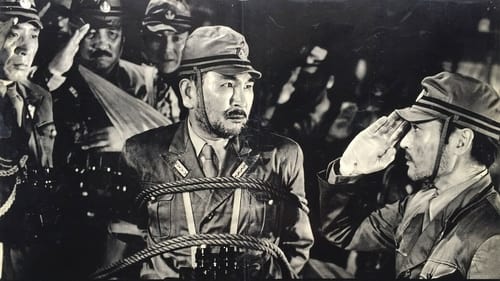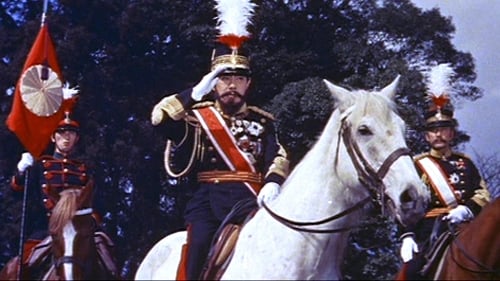
El superhéroe Starman (o Super Giant) es enviado por el planeta Esmeralda para proteger la Tierra de unos alienígenas provenientes de la galaxia Zafiro. Los zafirianos secuestran al doctor Yamanaka y lo fuerzan a usar su nave espacial contra la Tierra. La película junta las partes 5 y 6 de la serie "Super Giant" (1957-1959).

Super criminals are planning to infiltrate Earth with mass nuclear destruction! Only Starman can defend civilization by thwarting evil!

A bunch of pernicious salamander men from the planet Kulimon in the Moffit Galaxy plan on taking over Earth by unleashing a lethal plague on mankind. It's up to valiant superhero Starman from the Emerald Planet to save the human race before it's too late.

Dr.Kurokawa
An evil brain from outer space unleashes monsters with deadly diseases on Earth with trying to conquer the universe. Superhero Starman must battle them all to save his planet.

Crime film directed by Tatsuo Yamada for Shintoho.

Dr. Kusama
Luego de un accidente en la ruta en el cual atropellan a una persona, Shiro y Tamura, dos estudiantes que terminan huyendo del lugar, conocerán el Infierno sin intermediarios. Shiro, el más inocente, quiere confesar el accidente, pero su malicioso amigo Tamuro lo impide. En una noche irreal los amigos son devorados por el abismo, y la segunda mitad de este verdadero clásico del cine de horror detalla el descenso al infierno budista. (FILMAFFINITY)

Nagasunehiko
Japanese war film.

After the massacre of Christians at Shimabara, followers of Amakusa Shiro band together in a plot to overthrow the shogunate in order to exact revenge on the Tokugawa. At the same time there is a succession dispute in the Kuroda clan, as one faction tried to usurp the rightful heir and take over the honored clan. Before his untimely death, the lord of the Kuroda bestowed “Nihongo”, a magnificent spear, on his finest warrior, which ultimately brings him into contact with two of Japan’s most famous historical figures, Yagyu Jubei and Miyamoto Musashi. Can the three masters of martial art join forces to defeat their enemies and save the nation?

From the king of Japanese exploitation films comes a criminal drama told in a semi-documentary fashion. The murder of the chief official of Kobe city's Customs triggers an investigation of a prostitution ring called the 'Yellow Line' that sells Japanese women. A hired assasin is betrayed by his organization, and kidnaps a woman who happens to be the girlfriend of a newspaper reporter.

Old man at mannequin store
Freelance reporter “Scoop” Machida is hot on the trail of a prostitution ring called the Black Line, when he is framed for the murder of a young woman. Forced to clear his own name, the handsome journalist sinks deeper into the Black Line’s rotten swamp of drugs, prostitution, and murder and finds unexpected help in Maya, a steamy female gambler familiar with the neon-lit streets, shadowy alleyways, and seedy nightclubs he must navigate. The closest film in the Line series to classic American film noir, Ishii’s Black Line is a pulpy assortment of crime film conventions including the starkly expressionistic black and white cinematography by Jûgyô Yoshida, a jazzy music score by Michiaki Watanabe, and a sleazy screenplay by Ishii and Ichirô Miyagawa.

Japanese film.

Japanese comedy film.

Vice-Admiral Nagumo
In 1941, overpopulated Japan faces an economic boycott and its armed forces push further to the south. And despite negotiations between Japan and the U. S. A. war is declared with the attack on Pearl Harbour. Victories follow for Japan on land and sea and her forces push forward to the borders of India. But gradually the tide turns in favour of the Allies and after the atom bombings of Hiroshima and Nagasaki, Japan is compelled to accept the Potsdam Declaration and by the order of the Emperor agrees to unconditional surrender. Under the supervision of the occupation forces the International Military Tribunal opens in Tokyo to try the Japanese war leaders. Established in the cause of justice, and to prevent future aggressive wars the trials drag on for two and a half years. And on December 23, 1948, General Tojo and six other war leaders mount the thirteen steps to the gallows at Tokyo's Sugamo prison.

Early pinku.

Yasuji
Earlier version or Prequel to Queen Bee and the School for Dragons.

The 6th Super Giant film. Although he was believed to be destroyed by the Nazi-like army, Super Giant breaks into the satellite, and a long, riotous battle ensues. (Part 2 of 2)

The 5th Super Giant film. Super Giant pursues a Nazi-like army that operates on a huge satellite in space. The satellite is armed with weapons that could destroy whole cities on Earth from afar. (Part 1 of 2)

Japanese war film based on the true story of Yoshiko Kawashima, played by actress Miyuki Takakura in her film debut.

The 4th Super Giant film, in which he continues his fight against the Kapia Aliens (Part 2 of 2)

The 3rd Super Giant film, in which he saves Earth from the threat of the reptile-like Kapia Aliens.

The 2nd Super Giant film.
Super Giant continues his battle against the foreign terrorists. In return, they frame him for murder. (Part 2 of 2)

A samurai rescues a mischievous tanuki from hunters and sets it free. When the samurai's wastrel son hatches a plot to kill his father for his fortune, the magical tanuki is determined to protect its rescuer.

Meiji Tenno portrayed the ramp up to the Russo-Japan War. In addition to showing the political events that led to war, it also showed the era from the story of a farm family in rural Japan who sent their son off to war. As such, it could be considered an anti-war movie, showing how, while war is devised by governments, the people do not really understand what war is, and it's combatants often do not know what they are fighting for.

An exciting historical drama in which a beautiful woman secretly solves the family problems of the Owari clan. Hibari Misora plays two roles: a charming princess and a dashing youngster, performs songs and dances throughout the film until the big decisive battle.

Japanese comedy film.

Admiral Isoroku Yamamoto leads the Combined Fleet of the Imperial Japanese Navy to defeat the American Fleet.

Gosho’s most celebrated film both in Japan and the West, Where Chimneys Are Seen is perhaps the most compelling example of his concern for, and insights into, the everyday lives of lower-middle-class people. Based on Rinzo Shiina’s novel of the absurd, the film depicts the lives of two couples against the backdrop of Tokyo’s growing industrialization during the 1950s.

After mastering swordsmanship at the dojo of Chiba Shusaku, and unable to serve a clan due to his illness, Hirate Miki becomes a ronin who winds up as bodyguard to Shigezo of Sasagawa leading up to an epic battle.

















